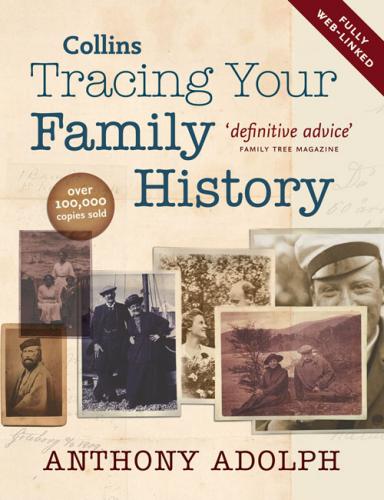QUICK REFERENCE
See Main Sources in Useful Addresses.
PURCHASING CERTIFICATES
You can search the indexes to births, marriages and deaths, but to see the records themselves you must purchase certificates, costing £7 each. There are strong arguments against paying for this as they are, after all, public records and things may change, but not yet.
LIFETIMES: DEATH IN A FENCE
THE DEATH CERTIFICATE of Samuel Blain showed that he died on 19 April 1899, aged 88, and was a retired roadman. His place of death was unusual, ‘The Forest, Delamere’, and the cause of death was ‘exhaustion the result of being suspended in a wire fence – accidental’. The certificate tells us an inquest was held by the Chester coroner on 21 April.
The local Cheshire newspaper, the Chronicle (examined at the British Library’s newspaper library at Colindale), for 22 April gave the following report:
Mr J. C. Bate, coroner, held an inquiry today (Friday) at the Tiger’s Head Inn into the circumstances attending the death of Samuel Blain, labourer, aged 86 [sic], who was found dead in Delamere Forest on Wednesday night. It appeared from the evidence of the widow that her husband had not been able to work for several years, but it had been his habit to go out for a walk into the Forest every morning and to come back with a few sticks for fire lighting. On the morning in question he left home but did not return.– Samuel Blain, son of the deceased said that when he came home from work on Wednesday evening his mother told him that his father had been out all day and had not returned. In consequence of this he went to search for him in the Forest, and found him fast in a wire fence, quite dead. He went for assistance and the deceased was taken home.– Having heard the evidence the jury returned a verdict in conformity therewith.
Besides the terribly sad story, note that a different age (86 rather than 88) is given for Samuel, and we learn he had a widow who survived him, and a son, also named Samuel.
Once you have found the entry you suspect is the right one, you can order a certificate using the Registration Online Ordering Service (ROLO) at http://www.gro.gov.uk/gro/content/certificates/default.asp or ring 0845 603 7788. The cost is £7 and there is usually a delay of four working days before you can collect the certificate or have it posted to you. If you want next-day results, you can pay £23 for a priority service.
A checking process is available for all GRO certificates. It is a system whereby you can provide additional information on the back of the application form about what you hope will appear on the certificate. If the information does not appear on the certificate, the certificate will not be issued and you will be refunded £4 of the £7 you paid for it. This means that if you have four possible references to an ancestor’s birth, you do not have to buy all four (at a cost of £28) but you can have them checked: three negative results and one correct certificate will cost you only £19. However, the fact that you are unsure which reference is likely to be right emphasises how little you really know about the people concerned, so be very careful about what information you use as a checking point.
Occupations and addresses changed a lot, so avoid using these as checking points. The best ones to use are rough ages or parents’ names but, again, be careful because the registrar general’s staff have been known to be somewhat over-punctilious.
If you are seeking the marriage of someone with a father called John, and the certificate actually gives the father as John Edward, the checkers may return your application with a negative result, so make your search criteria broader by requesting a check for a father called ‘John plus or minus any other names’. Equally, instead of stating the exact age that you think someone should have been, give yourself a little leeway. Instead of ‘age 20’, say ‘age 18–22’.
The old General Registration Index Volumes at the now closed Family Records Centre are gone for good, replaced with online images. They lived formerly at St Catherine’s House, and then at Somerset House. Until microfiche copies were made in the early 1990s, these volumes were the only way to search for births (red volumes), marriages (green) and deaths (black) – and they were jolly heavy!
